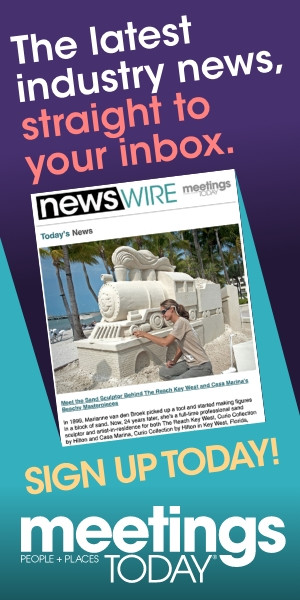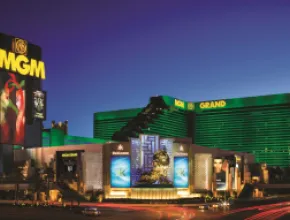From movies to music to shopping, today’s audiences expect every experience to be more customized, personalized and contextually relevant—meetings and events included.
As a futurist keynote speaker and consultant for over 2,500 brands, MICE industry leaders often ask me, “How can we cost-effectively tailor programming, activities and experiences to individual attendees?”
Like I explain in my new book Steinberg’s Guide to Creating Competitive Advantage, it’s not difficult to design conferences, conventions and corporate meetings that better speak to each attendee’s needs.
Here are 10 ways to craft event programs that all will find more engaging, impactful and customized to their preferences.
1. Use Data to Better Tailor and Target Content
Use surveys, registration forms or social media profiles to collect relevant attendee details. Example: Industry, professional role, areas of interest and goals for attending the event. Then use the data to craft content that speaks directly to differing attendee segments. At a tech conference, for example, you could break out attendees into categories such as developers, marketers or business executives, and create tailored sessions for each group.
2. Offer Multiple Session Tracks
Provide multiple learning pathways broken out based on attendee interests. Example: A marketing conference might have separate tracks for digital marketing, content strategy and social media. Similarly, for a corporate event, you could craft tracks by roles, such as leadership, sales or operations.
3. Use AI to Personalize Recommendations
Leverage smart tools to analyze attendee behavior, preferences and interactions, then automatically recommend sessions, speakers and networking opportunities for every visitor. For instance, if an attendee frequently attends sessions about green investing or sustainable practices in business, AI can recommend additional talks or workshops that align with these interests.
4. Build Interactive Workshops and Breakouts
Integrate interactive workshops and breakout sessions that allow attendees to actively participate in group activities, real-time problem-solving or collaborative brainstorming. Personalizing sessions to specific groups, i.e., by differing corporate departments or business units, can also create more relevant learning experiences. Note that content on common topics (e.g., adaptive leadership or addressing uncertainty) can also be delivered differently for managers and entry-level employees to better target guests.
5. Provide Personalized Event Apps
Never mind simple scheduling; you can also use custom apps to deliver more personalized content. Think customized agendas, individualized notifications and even in-app messaging that connects attendees with similarly minded guests. When attendees register, encourage them to fill out a profile that includes their professional background, interests and goals. Then use this data to send tailored recommendations, such as session suggestions or networking opportunities with attendees in similar fields.
6. Build Better Networking Events
Rather than having random mixers, provide targeted sessions that match attendees based on shared backgrounds and interests. Imagine, for instance, hosting speed networking sessions for project managers or data scientists, or based on trending topics like AI and automation. You could also use attendee matchmaking technology to suggest connections based on their profiles and interests.
[Related: 10 Ways to Maximize Your Event’s ROI]
7. Curate Content for Different Experience Levels
Creating tracks or sessions for beginners, intermediate learners and experts will allow attendees to engage with content that’s at the right level for them. Example: A financial services event could offer Investment 101 tracks for beginners and Advanced Portfolio Strategies programs for more experienced professionals. Likewise, you could also segment programming by topic, e.g., media buying, social media marketing and public relations.
8. Personalize Graphics and Messaging
When attendees walk into your event, make them feel special with personalized signage and visuals. Welcome banners, directional signs and even digital screens displaying personalized messages like "Welcome, [Name]" can create an immersive experience. You can also use tailored graphics in event materials such as session handouts, presentation slides or attendee lanyards, e.g., user-specific agendas and guides that point them to sessions of interest.
9. Offer Custom Catering
Create food stations that allow attendees to customize meals, e.g., build-your-own taco bars, salad stations or dessert buffets. Likewise, you might also ask attendees for diary preferences ahead of time and create tailored menus in turn. Or, you might book a variety of food trucks and vendors, allowing guests to mix and match meals as preferred.
10. Provide Personalized Swag
Instead of generic tchotchkes, consider offering personalized items. For instance, a SaaS firm could give away custom laptop sleeves or high-tech gadgets tailored on the spot with attendees’ names and initials. Alternately, you could 3D print giveaway items onsite, letting guests pick from a variety of collectibles.







